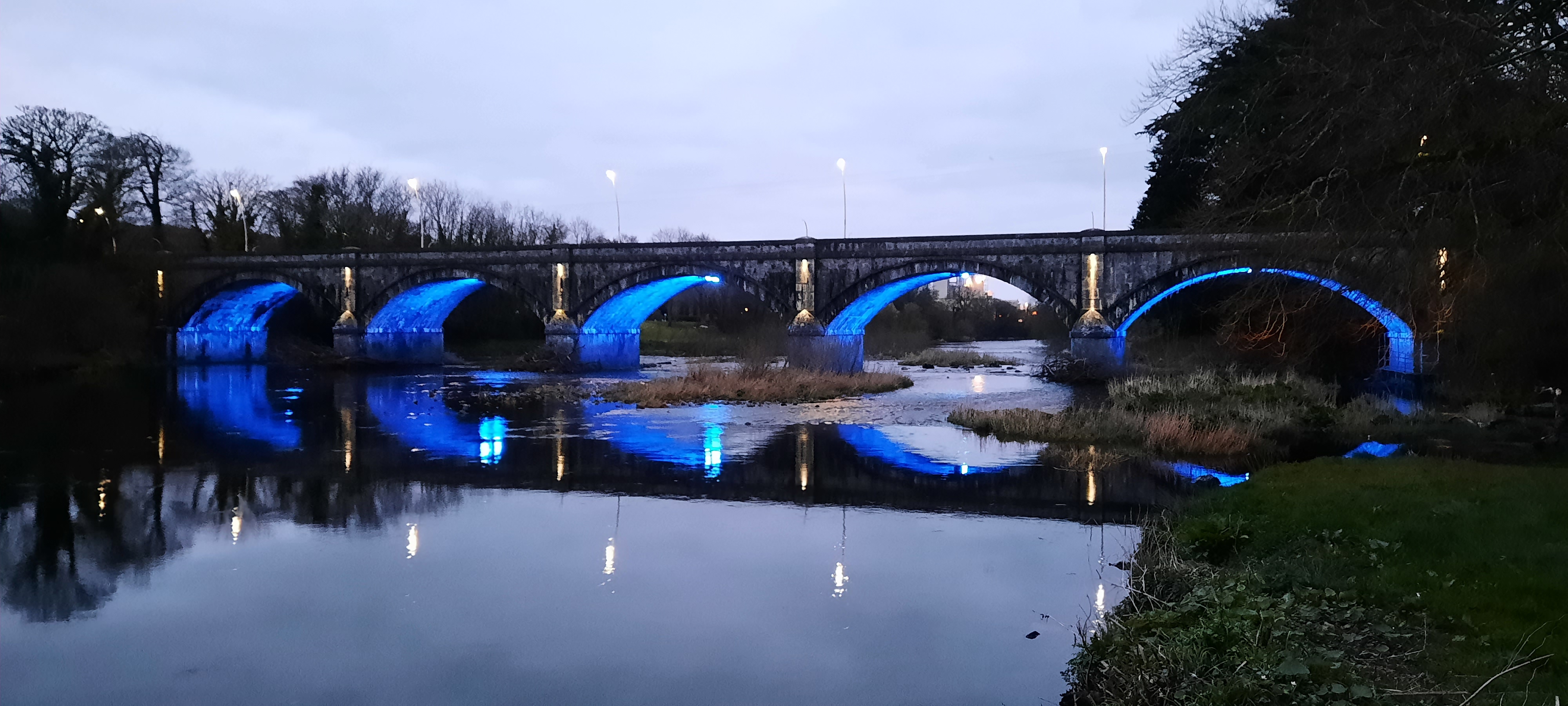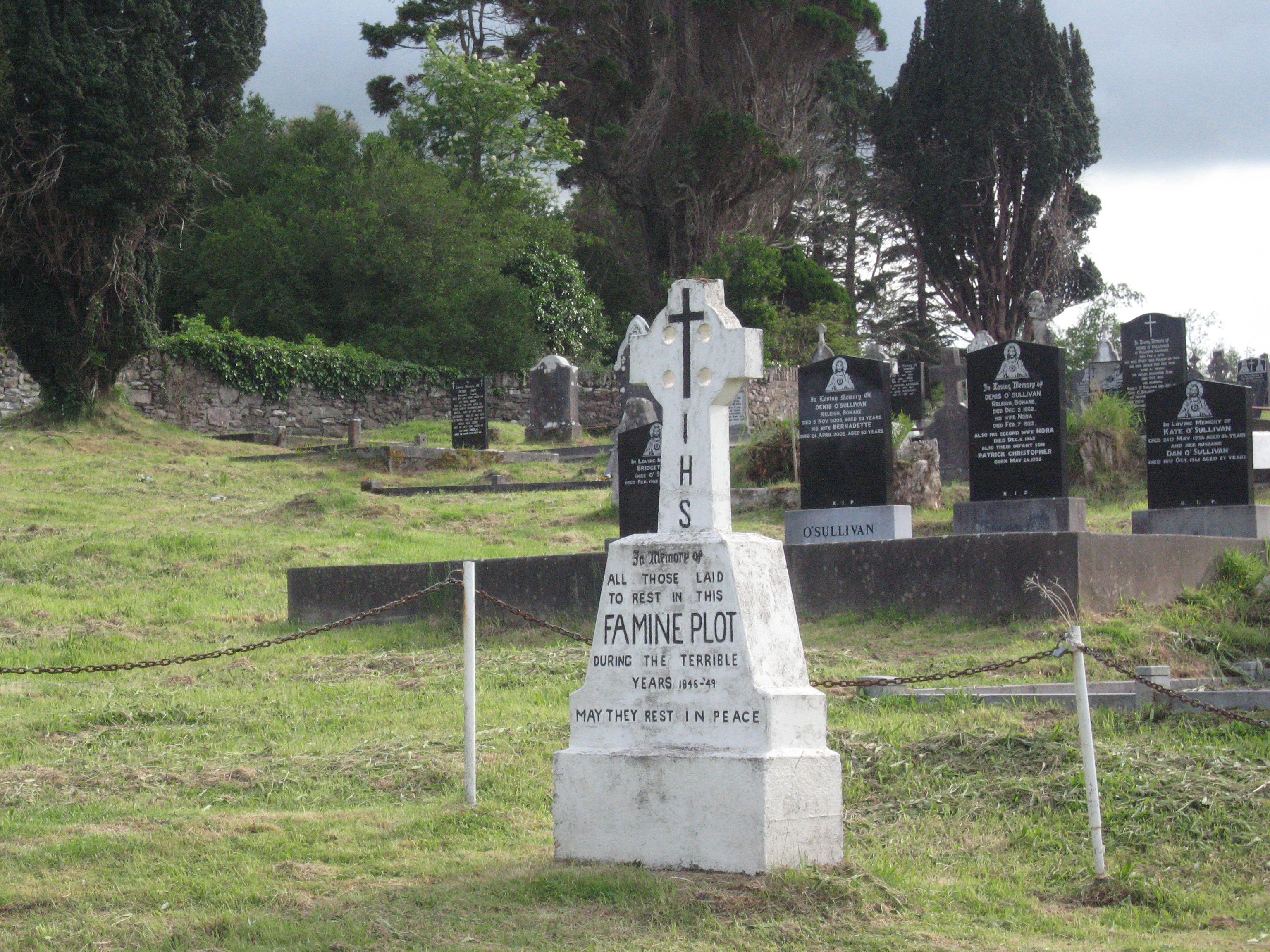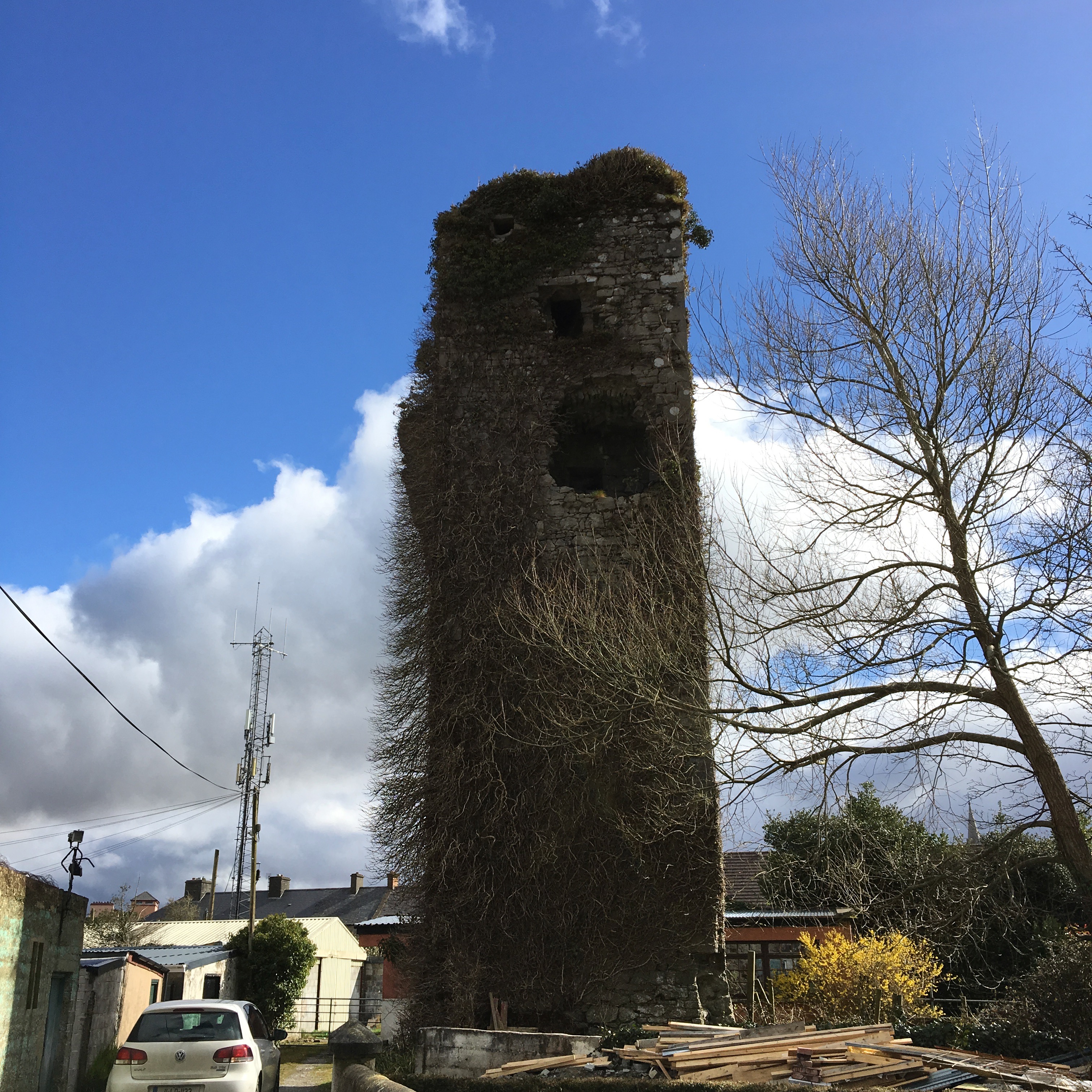|
Roman Catholic Diocese Of Kerry
The Diocese of Kerry ( ga, Deoise Chiarraí) is a Roman Catholic diocese in south-western Ireland, one of six suffragan dioceses in the ecclesiastical province of Cashel and Emly. The cathedral church of the diocese is St Mary's Cathedral in Killarney, County Kerry. The incumbent bishop of the diocese is Raymond Browne. History The diocese was established in the sixth century as the Diocese of Ardfert and Aghadoe. Its name was changed to the Diocese of Kerry on 20 December 1952. Geography There are 53 parishes in the diocese, which are divided between two civil counties: 44 in County Kerry and nine in County Cork. The parishes are grouped into 12 pastoral areas, formerly known as deaneries. As of April 2018, there were 54 priests in the diocese, six of whom were under the age of 50. Aside from the cathedral town of Killarney, the main towns in the diocese are Castleisland, Kenmare, Listowel, Millstreet, and Tralee. Ordinaries The following is a list of bishops si ... [...More Info...] [...Related Items...] OR: [Wikipedia] [Google] [Baidu] |
St Mary's Cathedral, Killarney
St. Mary's Cathedral, Killarney, is the cathedral church of the Diocese of Kerry situated to the west of Killarney in County Kerry, Ireland. Architecture St. Mary's Cathedral was designed by the renowned English architect Augustus Welby Pugin, who is said to have gained inspiration from the ruins of Ardfert Cathedral "which is particularly evident in the slender triple lancets in the east and west walls". Construction began in 1842 but was not continuous. The great famine and the lack of available funds meant the work was stopped several times; when work recommenced in 1853, the interior decorations were designed by James Joseph McCarthy. In 1855 the building was ready for regular worship. Separately the spire and nave were completed in 1907 by the Irish architects Ashlin and Coleman of Dublin, who had designed Cobh Cathedral. The width of the nave was based on the medieval models to be found throughout Ireland and England. The west end is very Irish in character, with three ... [...More Info...] [...Related Items...] OR: [Wikipedia] [Google] [Baidu] |
Ecclesiastical Province
An ecclesiastical province is one of the basic forms of jurisdiction Jurisdiction (from Latin 'law' + 'declaration') is the legal term for the legal authority granted to a legal entity to enact justice. In federations like the United States, areas of jurisdiction apply to local, state, and federal levels. Jur ... in Christianity, Christian Churches with traditional hierarchical structure, including Western Christianity and Eastern Christianity. In general, an ecclesiastical province consists of several diocese, dioceses (or eparchy, eparchies), one of them being the archdiocese (or archeparchy), headed by a metropolitan bishop or archbishop who has ecclesiastical jurisdiction over all other bishops of the province. In the Greco-Roman world, ''ecclesia'' ( grc, ἐκκλησία; la, ecclesia) was used to refer to a lawful assembly, or a called legislative body. As early as Pythagoras, the word took on the additional meaning of a community with shared beliefs. This is the ... [...More Info...] [...Related Items...] OR: [Wikipedia] [Google] [Baidu] |
Allihies
Allihies (; ) is a townland in the civil parish of Kilnamanagh, in County Cork, Ireland. The townland of Allihies is located at the western tip of the Beara Peninsula. History of copper mining From the Bronze Age the area had been a site of copper-mining. In 1812 John Lavallin Puxley (1772-1856) established a company to operate the Berehaven copper mines at Allihies. During the following century, between 1812 and 1912, 297,000 tons of ore were recorded as passing through the smelter at Swansea in Wales from the mines at Allihies. Drilling during this period by the Berehaven company took place throughout the townland of Allihies, and the adjacent townlands of Cloan and Kealoge. Three ruined Cornish engine houses are visible from Allihies. The most visually prominent is the Mountain Mine man engine house, located on the skyline above the village, and installed by the noted Cornish engineers Michael Loam and Son in 1862. In the late nineteenth century, newly developed sources ... [...More Info...] [...Related Items...] OR: [Wikipedia] [Google] [Baidu] |
Adrigole
Adrigole () is a village on the Beara Peninsula in County Cork, Ireland. It is centred on the junction of the R572 and R574 regional roads. The electoral division in which the village sits has a sparsely distributed population of about 450 people. Adrigole is a scattered village strung approximately 9 km along the north-western shore of Bantry Bay on the scenic south coast of the Beara Peninsula. Looming over it is Hungry Hill (687m, 2,253 ft) with two rock-girt lakes which feed a cascade. Hungry Hill is the highest of the Caha range which forms the spine of the peninsula, and gave its name to Daphne du Maurier's novel about the local copper-mining barons of the 19th century. There is also Adrigole Mountain and the Healy Pass (334m) nearby. Amenities and economy The main industries in the area are fishing, farming, and tourism. The village has a shop known locally as ''"Peg's Shop"'' - which also offers limited postal services. There are also two pubs and a Catho ... [...More Info...] [...Related Items...] OR: [Wikipedia] [Google] [Baidu] |
Beara Peninsula
Beara ( ga, Béarra) or the Beara Peninsula is a peninsula on the south-west coast of Ireland, bounded between the Kenmare "river" (actually a bay) to the north side and Bantry Bay to the south. It contains two mountain ranges running down its centre: the Caha Mountains and the Slieve Miskish Mountains. The northern part of the peninsula from Kenmare to near Ardgroom is in County Kerry, while the rest forms the barony of Bear in County Cork. The main features of Beara's landscape were formed during the quaternary period which ended 12,000 years ago. There is evidence of human activity on the peninsula dating from at least 3000 BC. Later it was invaded by Vikings, and in the 17th century became a defensive position for the English Army against French invasion. Its population peaked at 39,000 before the Great Famine; today there are fewer than 6000 living in the area. The peninsula contains a long and varied scenic coast, two mountain ranges and a number of passes, and forms ... [...More Info...] [...Related Items...] OR: [Wikipedia] [Google] [Baidu] |
Tralee
Tralee ( ; ga, Trá Lí, ; formerly , meaning 'strand of the Lee River') is the county town of County Kerry in the south-west of Ireland. The town is on the northern side of the neck of the Dingle Peninsula, and is the largest town in County Kerry. The town's population (including suburbs) was 23,691 census, thus making it the eighth largest town, and List of urban areas in the Republic of Ireland by population, 14th largest urban settlement, in Ireland. Tralee is well known for the Rose of Tralee (festival), Rose of Tralee International Festival, which has been held annually in August since 1959. History Situated at the confluence of some small rivers and adjacent to marshy ground at the head of Tralee Bay, Tralee is located at the base of an ancient roadway that heads south over the Slieve Mish Mountains. On this old track is located a large boulder sometimes called Scotia's Grave, reputedly the burial place of an Egyptian Pharaoh's daughter. Anglo-Normans founded the to ... [...More Info...] [...Related Items...] OR: [Wikipedia] [Google] [Baidu] |
Millstreet
Millstreet () is a town in north County Cork, Ireland, with a population of 1,555 (as of 2016). Millstreet is within the civil parish of Drishane, and within a Poor Law Union also called Millstreet. The Millstreet Union encompasses the civil parishes of Drishane and Kilcorney. Geography The town is at the foot of Clara Mountain. The townlands within Millstreet Poor Law Union were part of the barony of West Muskerry. Aubane was a neighbourhood of Millstreet Poor Law Union within the townlands of Tooreenbane and Tullig, and is outside the town itself. Culture The Green Glens Arena, an entertainment complex and large equestrian centre, is located in Millstreet. It has hosted a number of major events, including the Eurovision Song Contest 1993, with Millstreet being the smallest town to host the competition. After the 2022 Russian invasion of Ukraine, the arena was agreed to be used for temporary accommodation for Ukrainian refugees. Since 1961, Millstreet Town Park has been ... [...More Info...] [...Related Items...] OR: [Wikipedia] [Google] [Baidu] |
Listowel
Listowel ( ; , IPA:[ˈlʲɪsˠˈt̪ˠuəhəlʲ]) is a heritage market town in County Kerry, Ireland. It is on the River Feale, from the county town, Tralee. The town of Listowel had a population of 4,820 according to the Central Statistics Office of Ireland, CSO Census 2016. Described by the organisers of Listowel's writers festival as the "Literary Capital of Ireland", a number of internationally known playwrights and authors have lived there, including Bryan MacMahon (writer), Bryan MacMahon and John B. Keane. Location Listowel is on the N69 road (Ireland), N69 Limerick – Foynes – Tralee Roads in Ireland, road. Bus Éireann provides daily services to Tralee, Cork (city), Cork, and Limerick. The nearest railway station is Tralee. Listowel used to have its own railway station on a broad gauge line between Tralee and Limerick city; however, this was closed to passengers in 1963, to freight in 1978, and finally abandoned and lifted in 1988. The station building has been ... [...More Info...] [...Related Items...] OR: [Wikipedia] [Google] [Baidu] |
Kenmare
Kenmare () is a small town in the south of County Kerry, Ireland. The name Kenmare is the anglicised form of ''Ceann Mara'', meaning "head of the sea", referring to the head of Kenmare Bay. Location Kenmare is located at the head of Kenmare Bay (where it reaches the farthest inland), sometimes called the Kenmare River, where the Roughty River (''An Ruachtach'') flows into the sea, and at the junction of the Iveragh Peninsula and the Beara Peninsula. The traditional Irish name of the bay was ''Inbhear Scéine'' from the Celtic ''inver'', which is recorded in the 11th Century narrative ''Lebor Gabála Érenn'' as the arrival point of the mythological Irish ancestor Partholón. It is also located near the MacGillycuddy's Reeks, Mangerton Mountain and Caha Mountains and is a popular hillwalking destination. Nearby towns and villages are Tuosist, Ardgroom, Glengarriff, Kilgarvan, Killarney, Templenoe and Sneem. Kenmare is in the Kerry constituency of Dáil Éireann. History Th ... [...More Info...] [...Related Items...] OR: [Wikipedia] [Google] [Baidu] |
Castleisland
Castleisland () is a town and commercial centre in County Kerry in south west Ireland. The town is known for the width of its main street. As of the 2016 Census, Castleisland had a population of 2,486. Castleisland was described by one of its citizens, journalist Con Houlihan, as "not so much a town as a street between two fields". History Castleisland was the centre of Desmond power in Kerry. The village got its name, 'Castle of the Island of Kerry', from a castle built in 1226 by Geoffrey Maurice (or de Marisco). Maurice had been the Lord Justice of Ireland during the reign of King Henry III. The island was created by turning the waters of the River Maine into a moat around the castle. Sometime in the 120 years after its construction, the castle was taken by the forces of the Earl of Desmond. It is known that in 1345 the castle was being held for the Earl of Desmond by Sir Eustace de la Poer and other knights when it was captured by Sir Ralph Ufford, Lord Justice of Ir ... [...More Info...] [...Related Items...] OR: [Wikipedia] [Google] [Baidu] |
Irish Examiner
The ''Irish Examiner'', formerly ''The Cork Examiner'' and then ''The Examiner'', is an Irish national daily newspaper which primarily circulates in the Munster region surrounding its base in Cork, though it is available throughout the country. History 19th and early 20th centuries The paper was founded by John Francis Maguire under the title ''The Cork Examiner'' in 1841 in support of the Catholic Emancipation and tenant rights work of Daniel O'Connell. Historical copies of ''The Cork Examiner'', dating back to 1841, are available to search and view in digitised form at the Irish Newspaper Archives website and British Newspaper Archive. During the Irish War of Independence and Irish Civil War, the ''Cork Examiner'' (along with other nationalist newspapers) was subject to censorship and suppression. At the time of the Spanish Civil War, the ''Cork Examiner'' reportedly took a strongly pro-Franco tone in its coverage of the conflict. As of the early to mid-20th century, th ... [...More Info...] [...Related Items...] OR: [Wikipedia] [Google] [Baidu] |
The Kerryman
''The Kerryman'' is a weekly local newspaper published in County Kerry in Ireland by Independent News & Media who are a subsidiary of Mediahuis. The newspaper was founded in 1904 by Maurice Griffin and cousins Thomas and Daniel Nolan. Independent News & Media, then known as Independent Newspapers Limited acquired ''The Kerryman'' in 1972. It has three different editions – North Kerry, South Kerry and Tralee. All three editions are tabloid format newspaper. The move of the Tralee edition to a tabloid format in 2006 meant that ''The Kerryman'' became Ireland's first dual format newspaper. The last broadsheet edition hit shops in 2009. The main office is located on Denny Street in Tralee having moved from its previous base of over thirty years in the Clash Industrial Estate in 2007. According to thAudit Bureau of Circulations it had an average weekly circulation of 19,886 during the first six months of 2011, a fall of 3.5% year on year and 21% since 2008. These are the las ... [...More Info...] [...Related Items...] OR: [Wikipedia] [Google] [Baidu] |






.jpg)